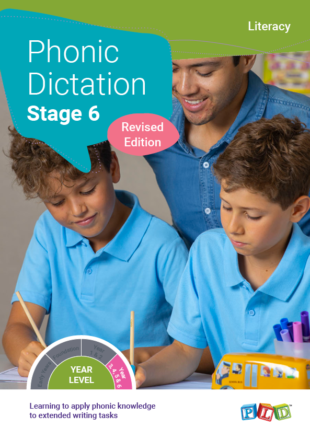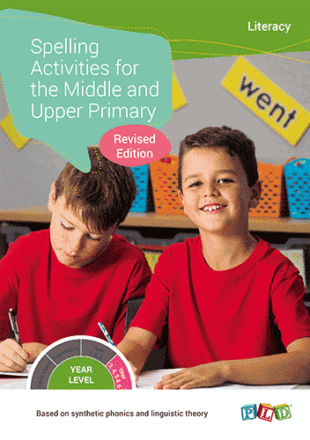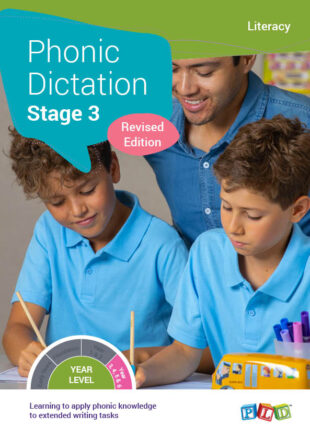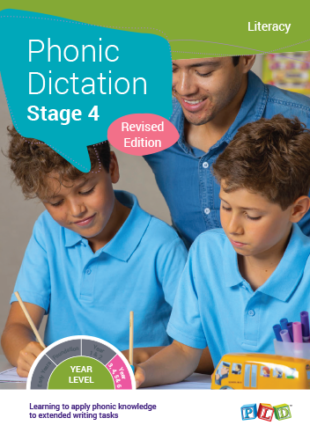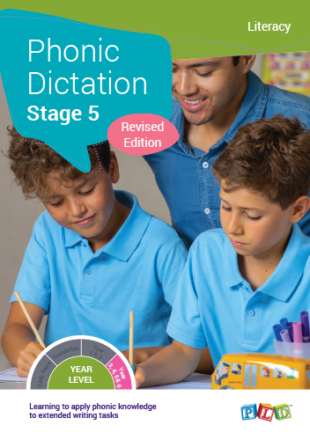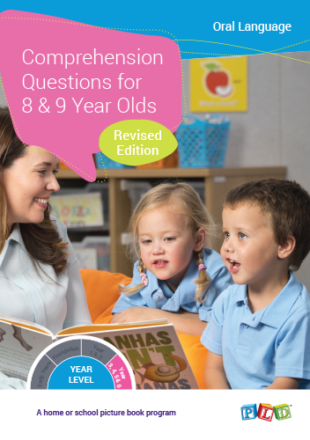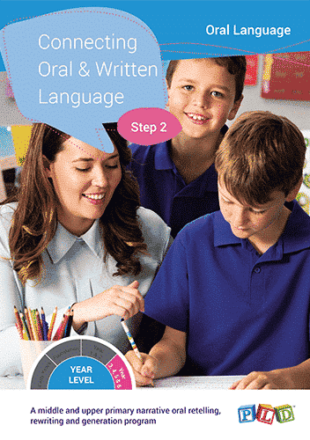Typically there is a significant range in ability within most middle and upper primary classes. Some students will still present with junior primary levels and require targeted synthetic phonics instruction. Other students will present with average or advanced skills and require phonics-based word study that progresses from analysing words at the individual sound (or phoneme) level to syllabic spelling with a focus on prefixes, suffixes and word knowledge as the vocabulary of the words becomes sophisticated. Catering for the increased range in ability is central to the PLD implementation process later in the primary school years. Below is an extract from PLD’s 2020 Whole School Literacy Strategy pages 21-23. You can request complimentary printed copies or download a version for your school here.
Setting your students up for success in the new school year with PLD involves three components:
- Student screening and tracking
- Investing in your Professional Development
- Having the right programs
How do we start preparing to implement PLD in Year 3, 4, 5 & 6?
- Download the Year 3, 4, 5 & 6 literacy screens
- Register for the 2020 monitoring and tracking sheets
- If some students are operating at a junior primary level, also download the Early Reading Profile – Year 1 and 2. It is likely that these students will still require decodable readers.
Key PLD dates to note in Term 1
- Week 1: Download the 2020 Monitoring and Tracking Spreadsheets.
- Week 1: Literacy – Present the Phonic and Sight Word Sequence Placement Test. Student results should be entered into a ‘cloud-based’ tracking by close of week 1.
- Weeks 1 & 2: Oral Language – ‘Show and Tell’, for example – Olympics.
- Week 2-9: Literacy – Explicit teaching phase covering spelling, word study lists, High Frequency Words along with the meaning and definitions of words.
- Weeks 3 & 4: Oral Language – ‘Show and Tell’, for example – Leaves.
- Weeks 5 & 6: Oral Language – ‘Show and Tell’, for example – Countries.
- Weeks 7 & 8: Oral Language – ‘Show and Tell’, for example – Crustaceans.
- Weeks 9 & 10: Oral Language – ‘Show and Tell’, for example – Countries.
- Week 10: Literacy – Present the End of Term 1 PLD Placement Test, pg 35. Student results to be entered onto ‘cloud-based’ tracking by close of week 10. Based on your students’ results, adjust the groups accordingly before the start of Term 2.
Whole Year Scope and Sequence Overview
While some of the children will progress faster and some slower, this plan is for the bulk of the children. Download PLD’s whole year scope and sequence overview for Early Years to Year 6 here.
Let’s break it down further …
Year 3, 4, 5 & 6 – Literacy – Term 1 focus
Catering for Range in Ability and Instructing Word Study Lists At the start of each week, provide each student with a word study list. The word study lists should be based on your placement testing, it is expected that you provide three levels of words for each class. Typically word lists should be comprised of one or two focus phonic concepts devised from the lists in the Phonic and Sight Word Sequence. Rather than providing words as purely spelling words, a broader set of word study goals are proposed. The word study goals for your students are: they should be able to read and spell the words, sound out the word, identify the phonemes (i.e. apply phonological awareness skills) and phonics within the words and transfer the words into extended writing, both in dictation and self generated writing. Your students should be retaining the concepts over the term and not just during the week they are presented.
How do you structure A Synthetic Phonics Approach Within Literacy Blocks? An easily adaptable, well-trialled structure, has been listed on page 22 of our downloadable ‘Whole School Literacy Plan’.
- Organisation Potential Time Frame: 1-2 minutes. Place spelling books on desks/tables, collect two coloured pencils/pens, then return to the group for the ‘teaching phase’.
- Revision of concepts already covered and explicit introduction of the words/concepts of the week. Potential Time Frame: 5 minutes. Commence by revising phonic concepts already covered. This can be facilitated through PLD Synthetic Phonics flip books, flash cards or the design of a Powerpoint. Follow this by reading and ‘sounding-out’ the spelling words within each assigned spelling list. For the students with lower literacy skills, this provides exposure to future concepts. For the average and more able students, this provides an on-going revision of previously covered concepts. Important for all students within the class, this daily practice reinforces phonemic awareness skills, which is essential for the retention of phonic concepts. Later in the week, the use of small whiteboards with the whole class can also be a useful process.
- Demonstration of the task for the day. Potential Time Frame: 4 minutes. Rather than rotating groups, a simple and effective process involves every student completing the same task even though their assigned list words may differ. Hence, even though the specific set of assigned words will differ, the task being completed by the whole class is the same. Importantly show the students how to complete the task properly, rather than completing the task with short cuts. Explain WHAT is the purpose of the assigned task, and WHAT is the learning that should be occurring. Explain and model the task for the day with one (or two) words from each of the spelling lists.
- Set a timer for the completion of the task. Potential Time Frame: 10 or 15 minutes. Students will be expected to complete the daily task with their assigned spelling words. At this point in the session, the teacher typically joins the weak or less independent students.
Design a weekly routine of skill rehearsal tasks with a specific focus over a five day or weekly cycle. When instructing the spelling list words it is essential to focus on the phonic structure in conjunction with the sound structure. Why? Phonemic awareness instruction (or the ‘sound out as you spell strategy’) is imperative in order for phonics instruction to be effective. Specific activities can be selected (or adapted from): Spelling Activities in the Middle and Upper Primary.
- Monday – Tasks that focus students on phonemic based spelling, for example, Double Time and re-writing list words into Elkonin boxes with alternating colours.
- Tuesday – Tasks that focus students on phonemic based spelling, for example, Double Time, Look Cover Say Write Check using Elkonin boxes and alternating colours.
- Wednesday – Tasks that focus students on phonemic based spelling, for example, Sound Pyramids again with Elkonin boxes.
- Thursday – Tasks that require students to transfer their phonic knowledge into extended writing, for example, phonic passages presented as a dictation task.
- Friday – Tasks that require students to transfer their phonic knowledge into extended writing, for example, phonic passages presented as a dictation task.
For an overview of how you can support your students who are experiencing difficulties acquiring CVC reading and spelling skills, download our ‘2020 Whole School Literacy Plan for Australian Primary Schools’.
-
Phonic Dictation – Stage 6$82.50$82.50 incl. GST
-
Spelling Activities for the Middle And Upper Primary$82.50$82.50 incl. GST
-
Phonic and Sight Word Sequence$82.50$82.50 incl. GST
-
Phonic Dictation – Stage 3$82.50$82.50 incl. GST
-
Phonic Dictation – Stage 4$82.50$82.50 incl. GST
-
Phonic Dictation – Stage 5$82.50$82.50 incl. GST
Year 3, 4, 5 & 6 – Oral Language – Term 1 focus
Connecting Oral Language with Written Genres – Object Description (or ‘Simple Reports’) Explicit Instruction Schedule short daily (i.e. 5-10 minute) sessions to instruct ‘show and tell’ or object descriptions. Rather than students bringing in something from home, the descriptions are recommended to be based upon semantic categories. For example Olympic sports (in weeks 1 and 2), leaves (in weeks 3 and 4), Countries (in weeks 5 and 6) and Crustaceans (in week 7 and 8). After teaching, age appropriate description items can be brought in from home in weeks 9 and 10 for students to self generate their own descriptions.
Templates to support oral language transitioning into written language. At the end of each fortnight, a written description should be scheduled. This will challenge students to transfer into writing the strong oral sentence structure they have been rehearsing throughout the fortnight. Undoubtedly there will be a range in writing ability within the class. Different templates can be applied to various ability groups. Suggested program: Connecting Oral and Written Language – Step 2
Boost Reading Comprehension (through the facilitation of a home program)
- Provide a book with its corresponding scripted question card each week. Students can likely read the picture books but it is still appropriate for adults to read and ask the questions. Suggested PLD program: Comprehension Questions for 8 and 9 Year Olds
- Share this Parent training video with your parents and guardians.
Progress Check (optional) The comprehension questions program includes a targeted progress check. The check can be presented mid year and/or at the end of the year. Download the middle/upper primary progress check here. The information will provide evidence of progress and/or can be used to accompany a referral to a speech pathologist.
-
Comprehension Questions for 8 and 9 Year Olds$82.50$82.50 incl. GST
-
Connecting Oral and Written Language – Step 2$82.50$82.50 incl. GST
Your Term 1 Year 3, 4, 5 & 6 Year Checklist
1. Do I have the current PLD screening tools?
Each screen is available to download directly from the PLD site. Each of the PLD Screens has been updated for 2020. If you haven’t already, click here to download the revised versions.
2. Do I have the 2020 versions of the PLD tracking sheets?
PLD recommends that Year 3, 4, 5 & 6 testing is placed on the PLD tracking sheets, which can be requested here. General instructions and samples for achieving a consistent process can be found here.
3. Have I downloaded and read all of the relevant PLD information for Year 3, 4, 5 & 6?
These downloads include the PLD Whole School Literacy Strategy and Year 3, 4, 5 & 6 developmental milestones I should expect my students to be achieving.
4. Have I read through PLD’s 2020 checklist?
You can view the full Year 3, 4, 5 & 6 checklist here.
5. Have I shared the PLD process with the parents in my classroom?
PLD believes that school and home must work together in order to have an effective start to Year 3, 4, 5 & 6. PLD has created a range of parent information videos that are available to view here.
6. Have I downloaded the resources I need for running a successful Parent Information Night?
If not, you can download them here.
As always, we are on hand to help implement the PLD process in your school. If at any time you need any assistance with the above or any PLD programs you can get in touch with us by email to mail@pld-literacy.org. Wishing you all the best for Term 1.
Don’t forget to check back here late in Term 1 for What to teach? When to screen? and how to cater for the range of ability in your classroom and how you can adjust your data and teaching groups ready for Term 2.



